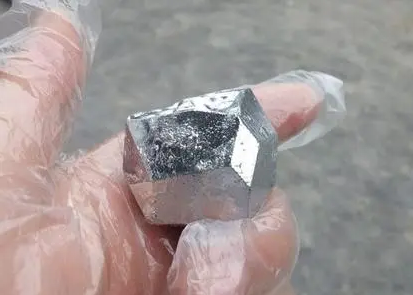Extraction of Gallium
Gallium looks like a piece of tin at room temperature, and if you want to hold it in your palm, it immediately melts into silver beads. Originally, the melting point of gallium was very low, only 29.8C. Although the melting point of gallium is very low, its boiling point is very high, reaching as high as 2070C. People use the properties of gallium to create thermometers for measuring high temperatures. These thermometers are inserted into a raging steel making furnace, and the glass shell is almost melting. The gallium inside has not yet boiled. If high-temperature quartz glass is used to manufacture the shell of a gallium thermometer, it can continuously measure a high temperature of 1500C. So, people often use this type of thermometer to measure the temperature of reaction furnaces and atomic reactors.
Gallium has good casting properties, and due to its “hot shrinkage and cold expansion”, it is used to manufacture lead alloys, making the font clear. In the atomic energy industry, gallium is used as a heat transfer medium to transfer heat from reactors. Gallium and many metals, such as bismuth, lead, tin, cadmium, etc., form fusible alloy with a melting point lower than 60C. Among them, gallium steel alloy containing 25% (melting point 16C) and gallium tin alloy containing 8% tin (melting point 20C) can be used in circuit fuses and various safety devices. As soon as the temperature is high, they will automatically melt and disconnect, playing a safety role.
In cooperation with glass, it has the effect of enhancing the refractive index of glass and can be used to manufacture special optical glass. Because gallium has a particularly strong ability to reflect light and can adhere well to glass, withstanding high temperatures, it is most suitable for use as a reflector. Gallium mirrors can reflect back more than 70% of the light emitted.
Some compounds of gallium are now inextricably bound to cutting-edge science and technology. Gallium arsenide is a newly discovered semiconductor material with excellent performance in recent years. Using it as an electronic component can greatly reduce the volume of electronic devices and achieve miniaturization. People have also made lasers using gallium arsenide as a component, which is a new type of laser with high efficiency and small size. Gallium and phosphorus compounds – Gallium phosphide is a semiconductor light-emitting device that can emit red or green light. It has been made into various Arabic numeral shapes and is used in electronic computers to display calculation results.
Post time: May-16-2023
